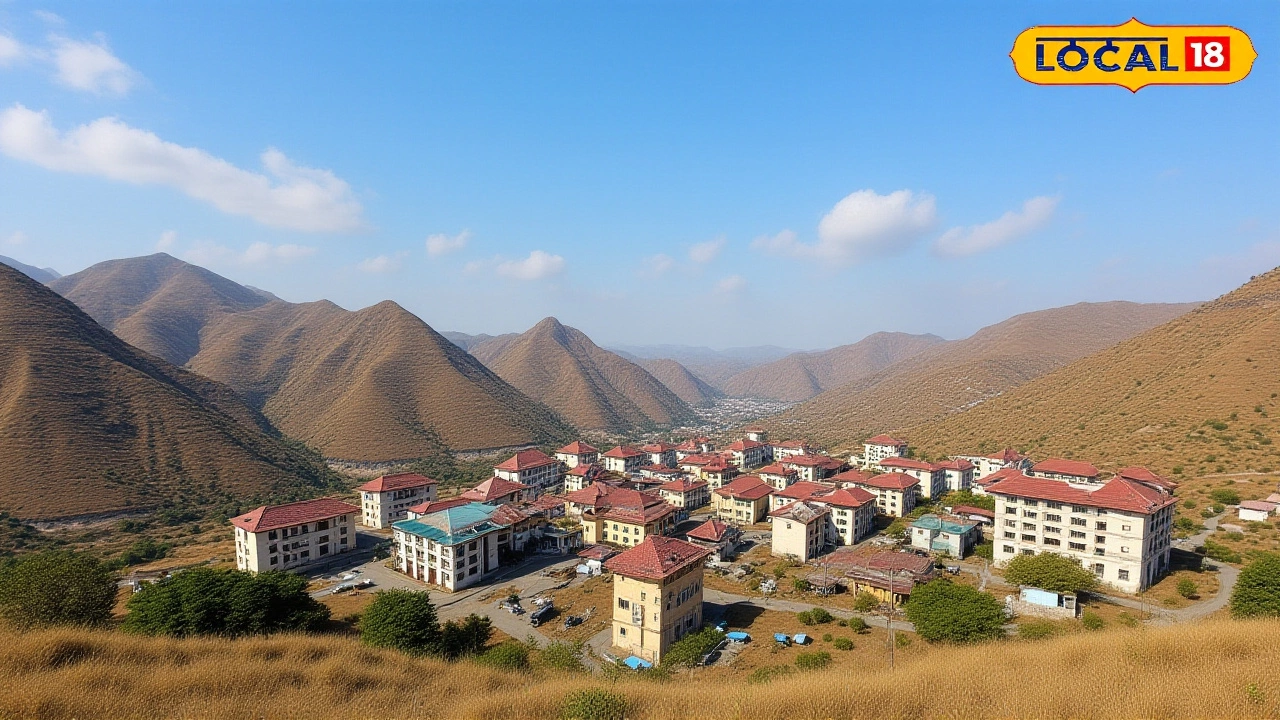
By late afternoon on October 29, 2025, the once-dangerous Cyclone Motha had lost its fury — not with a bang, but a sigh. The storm, which had churned up the Bay of Bengal and slammed into the coast near Machilipatnam and Kamalapuram on October 28, 2025, had weakened into a deep depression by 5:30 p.m. IST, its center now hovering over south Chhattisgarh. What was once a Category 1 cyclone with gusts over 120 km/h is now a slow-moving, rain-heavy low-pressure zone, but its aftermath is far from over. Across central and eastern India, rivers are swelling, roads are underwater, and farmers are watching their crops drown — not from drought, but from too much of the one thing they’ve been begging for: rain.
Where the Rain Still Won’t Stop
The India Meteorological Department (IMD) issued its most urgent warnings not for wind, but for water. On October 29, 2025, Telangana recorded “extremely heavy” rainfall — over 200 mm in 24 hours in places like Warangal and Nizamabad. Coastal Andhra Pradesh and the enclave of Yanam weren’t spared, with 150–180 mm recorded in Visakhapatnam and Kakinada. Meanwhile, Rayalaseema, Vidarbha, and Marathwada saw “very heavy” downpours — the kind that turns fields into lakes and rooftops into leaky sieves.The rain didn’t stop at the coast. By midnight, the system had pushed north, dragging moisture into Madhya Pradesh, where 12 districts — including Indore and Bhopal — were placed under an “orange alert.” In Bhind, rainfall hit 15 mm in just six hours. The IMD’s Doppler radar, constantly tracking every swirl and squall, confirmed the system was moving at just 10–18 km/h — slow enough to dump rain for hours, not minutes.
From Chhattisgarh to Bihar: The Domino Effect
What makes this storm’s legacy so dangerous isn’t its speed, but its persistence. As Chhattisgarh’s meteorologists noted, the remnants of Cyclone Motha are now acting like a sponge, soaking up moisture from the Bay and slowly releasing it inland. On October 30, 2025, Sarguja division saw scattered heavy showers, with some villages reporting 70 mm in under four hours. The state’s disaster management team has moved emergency supplies to 17 blocks where landslides are a real threat.Then came the ripple. By October 31, 2025, the system’s northern edge reached Bihar, where the India Meteorological Department issued its first “red alert” for flood-prone districts like Bhagalpur and Katihar. In eastern Uttar Pradesh, 17 districts — from Gorakhpur to Ballia — are bracing for 100–150 mm of rain over the next 36 hours. “We’ve seen this pattern before,” said Dr. Arjun Mehta, a climatologist at the Indian Institute of Tropical Meteorology. “When a cyclone stalls over central India, it doesn’t just rain — it floods the entire hydrological system.”
What’s Left Behind
The human cost is already mounting. In Andhra Pradesh, over 3,000 people remain in relief camps. Fishermen along the coast lost nearly 400 boats to rough seas. In Telangana, a bridge collapsed near Khammam, cutting off two villages for 18 hours. The state government has suspended all non-essential travel on major highways.But the most surprising impact? A sudden chill. As the cyclone’s moisture moved north, it pushed cooler air ahead of it. In Madhya Pradesh, temperatures dropped by 6°C in 24 hours. In Bhopal, people woke up to foggy mornings and shivered through breakfast — an unseasonable taste of winter, courtesy of a storm that began over the ocean.

What Comes Next
The IMD’s latest forecast is clear: Cyclone Motha won’t vanish overnight. Over the next 12 hours, it’s expected to drift northward into south Uttar Pradesh, weakening further into a “low-pressure area” by October 31, 2025. But that doesn’t mean safety. The moisture it’s left behind will continue feeding rain over Saurashtra, Kutch, West Bengal, and even Sikkim through the weekend.And here’s the twist: this isn’t an anomaly. The India Meteorological Department has flagged a 40% increase in post-monsoon cyclones over the last decade. Warmer sea surface temperatures in the Bay of Bengal — up 1.2°C since 2015 — are fueling more intense, slower-moving storms. Motha didn’t just break records; it followed a pattern. And experts warn: next year, it might be worse.
What Residents Need to Know
- Andhra Pradesh & Telangana: Avoid coastal zones. Flash floods still possible in low-lying areas. - Chhattisgarh & Madhya Pradesh: Watch for landslides in hilly districts. Roads remain slick. - Bihar & Eastern UP: River levels rising fast. Evacuation orders may follow. - Saurashtra & Kutch: Coastal erosion accelerating. Fishermen advised to stay ashore. The India Meteorological Department continues to issue hourly updates via its app and SMS alerts. If you’re in a red zone — don’t wait for the sirens. Move to higher ground. Now.Frequently Asked Questions
How much rainfall did Cyclone Motha dump in total?
By October 31, 2025, the remnants of Cyclone Motha had delivered over 300 mm of rain across Telangana and coastal Andhra Pradesh, with localized peaks exceeding 400 mm. In parts of Vidarbha and Marathwada, totals reached 250–280 mm. For comparison, that’s nearly the entire average October rainfall for Mumbai in just three days.
Why is this cyclone causing rain so far inland?
Unlike most cyclones that weaken quickly over land, Motha moved slowly — just 10–18 km/h — allowing it to drag moisture hundreds of kilometers north. It also interacted with a lingering monsoon trough, creating a prolonged rain machine. This is becoming more common as Bay of Bengal waters warm, giving storms more energy to sustain themselves inland.
Which areas are still under alert after Motha weakened?
As of October 30, 2025, orange alerts remain active in 12 districts of Madhya Pradesh, 17 districts of eastern Uttar Pradesh, and parts of Bihar. Red alerts are in place for flood-prone zones in Bhagalpur and Katihar. Saurashtra and Kutch are under yellow alerts for heavy rain through November 1.
Is this linked to climate change?
Yes. The India Meteorological Department reports a 40% rise in post-monsoon cyclones since 2015. Sea surface temperatures in the Bay of Bengal have risen 1.2°C, fueling stronger, slower storms. Motha’s prolonged rainfall pattern matches climate models predicting more frequent, water-heavy cyclones — not just in India, but across South Asia.
What should farmers do now?
Farmers in affected regions should drain standing water from paddy fields to prevent root rot. Crops like cotton and pulses are especially vulnerable to waterlogging. The Agriculture Ministry has advised using potassium-rich foliar sprays to help plants recover from stress. Emergency crop insurance claims can be filed through the PM Fasal Bima Yojana portal.
Will the cold weather last?
The dip in temperatures — especially in Madhya Pradesh and Uttar Pradesh — is temporary, tied to the cyclone’s moisture cloud. But if the low-pressure system lingers into early November, it could delay the onset of winter by 7–10 days. That’s a concern for winter crop sowing, especially wheat in the Indo-Gangetic plain.